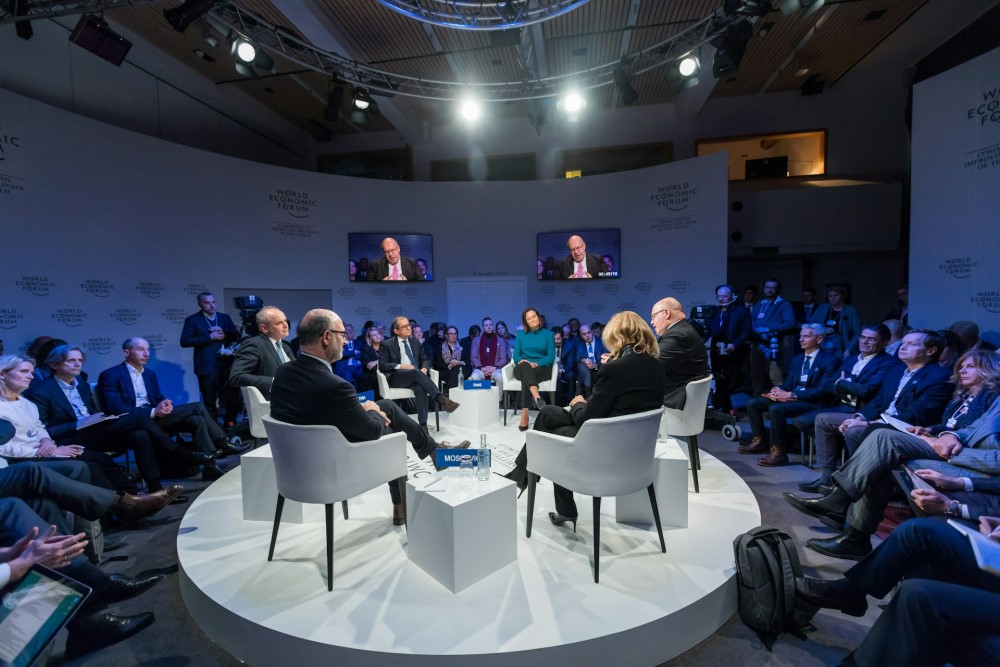
How to Plan an Office Party That Encourages Networking
In today’s professional landscape, networking has become an indispensable tool for career growth and advancement. While traditional networking events serve their purpose, there’s an often-overlooked opportunity to foster connections within the confines of the workplace itself. Enter the office party that encourages networking – a strategic and enjoyable way to cultivate professional relationships and encourage employee retention while celebrating achievements and fostering team spirit.
Office parties are more than just occasions for free drinks and casual conversations. When planned thoughtfully, they can serve as powerful platforms for employees to expand their professional networks, forge meaningful connections, and strengthen bonds beyond the confines of their desks. However, orchestrating such an event requires careful planning and execution to ensure its success.
The key to planning an office party that encourages networking lies in creating an environment that facilitates organic interactions and fosters genuine connections. Whether it’s a holiday celebration, a milestone achievement, or simply a Friday evening get-together, every office gathering presents an opportunity to enhance camaraderie and promote networking among colleagues.
At the heart of any successful networking event is a clear understanding of the objectives. Are you aiming to facilitate cross-departmental collaboration, introduce new team members, or simply provide a platform for casual conversation? Defining your goals from the outset will guide the planning process and ensure that the event aligns with the company’s overall objectives.
Moreover, thoughtful consideration should be given to the venue, timing, and format of the office party. Choosing a venue that is conducive to mingling and conversation, such as a spacious lounge area or rooftop terrace, can set the stage for meaningful interactions. Similarly, selecting a time that accommodates the majority of employees and allows for relaxed engagement is crucial.
Equally important is the format of the event. While structured activities and icebreakers can facilitate introductions, it’s essential to strike a balance between organized networking opportunities and free-flowing conversation. Incorporating elements such as themed food stations, interactive games, or live entertainment can add an element of fun while encouraging attendees to mingle.
Additionally, the promotion of inclusivity and diversity should be at the forefront of event planning. Consideration should be given to accommodating various dietary restrictions, cultural preferences, and accessibility needs to ensure that all employees feel welcome and valued.
In the following guide, we’ll delve deeper into the essential steps for planning an office party that not only celebrates accomplishments but also cultivates a culture of networking and collaboration. From setting objectives and selecting venues to crafting engaging activities and fostering inclusivity, we’ll provide actionable tips and strategies to help you host a memorable and impactful networking event. So, let’s raise a toast to professional connections and collective success as we embark on the journey of planning an office party that encourages networking.
Choose the Right Venue

When planning an office party, it is crucial to choose the right venue in order to create the desired ambiance and atmosphere. Here are the steps to assist you in choosing the ideal venue:
- Consider the capacity: Determine the number of attendees and select a venue that can comfortably accommodate them. Sufficient space is necessary for people to interact with one another.
- Location: The venue should be easily accessible for all participants. Take into account its proximity to public transportation and parking options for convenience.
- Ambience: The venue should have a professional yet welcoming atmosphere. Find a space that aligns with the party’s theme and purpose. A formal event might require an elegant and sophisticated venue, while a casual gathering may be better suited for a trendy and relaxed setting.
- Facilities and amenities: Verify whether the venue provides essential amenities such as audiovisual equipment, Wi-Fi, and catering services. These amenities enhance the overall experience and make networking more convenient.
- Cost: Establish a budget and compare different options. Consider package deals, additional costs, as well as any available discounts or promotions.
- Reviews and recommendations: Conduct research on the reputation and reviews of the venues you are considering. Look for feedback to ensure the venue meets your expectations and offers a positive experience.
By following these steps and choosing the right venue, you can create an office party that encourages networking and facilitates meaningful connections among colleagues.
Determine the Purpose and Objectives
When organizing an office party that encourages networking, it is crucial to determine the purpose and objectives of the event. This will guide the planning process and ensure that the party serves its intended purpose.
To start, identify the goals: Define the purpose of the office party. Is it to foster relationships among colleagues, promote team bonding, celebrate a milestone, or introduce new team members?
Consider the audience: Determine who will be attending the party and their expectations. Are they employees from different departments, clients, or business partners?
Next, set measurable objectives: Establish specific objectives aligned with the overall purpose. For instance, if the goal is to promote better teamwork, an objective could be to have employees from different departments engage in collaborative activities.
Define the desired outcomes: Envision the desired results of the office party. Will attendees form new connections, expand their knowledge of other teams or departments, or gain a better understanding of the company’s values and goals?
Ensure that the purpose and objectives of the party align with the company’s values, mission, and culture. This will create an atmosphere that resonates with attendees and reinforces the company’s identity.
By following these steps, you can determine the purpose and objectives of the office party, setting the stage for a successful event that promotes networking and enhances collaboration among employees.
For example, if the goal is to boost employee morale and foster a sense of belonging, you could plan team-building activities or organize an awards ceremony to recognize outstanding contributions. Alternatively, if the objective is to introduce new team members, you could arrange networking games or icebreaker activities to facilitate interaction and encourage conversations between employees.
Create a Guest List

Creating a guest list for an office party is crucial for a successful networking event. To create an effective guest list, follow these steps:
1. Define the event’s purpose: Determine if the party is meant to celebrate a milestone, encourage teamwork, or attract new clients. This will help identify the appropriate guests to invite.
2. Identify the target audience: Based on the purpose, determine the specific group of people that should attend. Consider employees from different departments, clients, industry leaders, and potential business partners.
3. Seek input from colleagues: Consult with colleagues to gather their perspectives on who should be invited. This ensures that all key stakeholders are considered in the guest list.
4. Categorise guests: Group guests into categories based on their relationship with the company, such as employees, clients, suppliers, or industry influencers.
5. Set a guest limit: Determine the maximum number of guests the office party can accommodate. This helps manage the guest list effectively and ensures a comfortable networking environment.
6. Research and invite potential guests: Use your professional network and online platforms to identify and invite potential guests. Send personalised invitations that clearly state the event’s purpose and benefits of attending.
7. Track RSVPs: Keep track of the responses to invitations and follow up with guests who haven’t responded yet. This finalises the guest list and allows for necessary event arrangements.
8. Promote diversity and inclusion: Ensure the guest list represents a diverse and inclusive group of individuals. Consider factors such as gender, ethnicity, and professional background to provide a well-rounded networking experience.
9. Continuously review and update the list: As the event approaches, regularly review and update the guest list based on new connections made or changes in circumstances. This ensures the right people are present at the office party.
Plan Engaging Activities
- Organise team-building games: Engage employees in enjoyable activities that promote teamwork and collaboration. Team-building games such as “Two Truths and a Lie” or “Escape Room” challenges encourage employees to interact and get to know each other better.
- Arrange interactive workshops: Plan workshops that provide opportunities for employees to learn new skills or enhance existing ones. Interactive sessions like cooking classes, painting workshops, or group yoga sessions spark conversations and create a relaxed atmosphere for networking.
- Create a networking scavenger hunt: Design a scavenger hunt that requires employees to interact with one another to complete tasks or find specific items. This activity encourages employees to network with colleagues they may not know well and fosters connections between different teams.
- Host speed networking sessions: Set up structured networking sessions where employees have a limited time to introduce themselves and exchange information. This format allows participants to meet multiple colleagues in a short period, promoting efficient networking.
- Organise a themed quiz or trivia night: Plan a quiz or trivia night based on a specific theme, such as pop culture, history, or industry-related knowledge. Employees form teams and compete against each other while fostering friendly conversations and building connections.
- Facilitate group activities: Arrange activities that require collaboration, like building a tower with limited resources or solving a problem as a team. These activities encourage teamwork and provide opportunities for employees to engage in meaningful conversations.
- Create discussion panels or workshops: Organise panels or workshops where employees can discuss industry-related topics of interest. These sessions allow for knowledge-sharing and networking among employees with similar professional interests.
Planning engaging activities during an office party boosts employee interaction, facilitates new connections, and enhances overall networking opportunities. By incorporating these activities, you can create an enjoyable and productive environment that encourages employees to network and build stronger relationships within the workplace.
Incorporate Icebreaker Games

When planning an office party, it is important to incorporate icebreaker games. These games help create a relaxed and friendly atmosphere, making it easier for colleagues to connect. Here are some icebreaker games that can be incorporated:
1. The Two Truths and a Lie game: Participants share three statements about themselves, two true and one false. The group guesses the lie. This game encourages conversation and learning about each other.
2. The Name Game: Participants form a circle and say their name along with an adjective that starts with the same letter. For example, “I’m Joyful John.” This game helps people remember names and encourages creativity.
3. The Human Bingo game: Participants get bingo cards with characteristics or experiences written in each square. They find people who fit those descriptions and have them sign the squares. This game promotes interaction and discovering shared interests.
4. The Speed Networking game: Participants introduce themselves and discuss a specific topic or prompt in a limited time, then switch partners and repeat. This game helps colleagues quickly get to know each other and practice networking skills.
5. The Picture Puzzles game: Participants each receive a puzzle piece and must find others to complete the puzzle. This game encourages collaboration and teamwork.
By incorporating icebreaker games into your office party, you can promote interaction and networking among colleagues, leading to stronger relationships and a more cohesive work environment. Remember to choose inclusive and fun games suitable for the occasion.
Provide Networking Opportunities
To ensure a successful office celebration that encourages networking, it is essential to offer a variety of networking opportunities for participants. Here are several ways to accomplish this:
- Kick off the event with icebreaker activities, team-building games, interactive quizzes, or speed networking sessions.
- Arrange dedicated areas within the venue that are purposefully designed for networking. These spaces should include comfortable seating, conversation starters, and prompts to facilitate networking.
- Incorporate networking games such as scavenger hunts, networking bingo, or “two truths and a lie” activities.
- Organize panel discussions or talks featuring industry experts or influential speakers who are relevant to the company’s field of work.
- Plan networking breaks throughout the event to allow attendees to socialize and form connections.
- Utilize technology by implementing a dedicated event app or platform that enables participants to connect, exchange contact information, and schedule meetings.
Offer Good Food and Drinks

When hosting an office party that emphasizes networking, it is essential to offer exceptional food and drinks. This is vital for creating a favorable and enjoyable experience for colleagues. Please take into account the following considerations:
- Diverse Menu: Ensure that there is a broad range of food options available to accommodate various dietary preferences and restrictions. Include choices for vegetarians, vegans, and individuals with gluten-free diets, so that everyone can indulge.
- High-quality Ingredients: Utilize fresh and premium ingredients to enhance the taste and visual appeal of the dishes, leaving a lasting impression and making the event more memorable.
- Appetizers and Finger Foods: Serve bite-sized appetizers and finger foods that are convenient to eat while socializing. This promotes networking and allows attendees to try a variety of dishes.
- Premium Drinks: Provide a selection of beverages, encompassing both alcoholic and non-alcoholic choices. Consider including wines, craft beers, signature cocktails, and mocktails to cater to different preferences.
- Skilled Bartender: Employ a proficient bartender to efficiently and expertly prepare and serve drinks of exceptional quality.
Did you know that offering good food and drinks at office parties enhances employee morale and cultivates a positive work environment? By creating a welcoming and enjoyable atmosphere, employees are more inclined to connect and network, resulting in increased collaboration and productivity.
Consider the Timing
Timing is crucial when planning an office party that encourages networking. The right timing ensures maximum participation and engagement from all employees. Consider these important considerations when it comes to timing:
- Weekday vs. Weekend: Hosting the party on a weekday after work allows employees to unwind and socialize without affecting personal time. An office party on a weekend can create a more relaxed atmosphere.
- Timing within the workday: Choose the best time within the workday to hold the party. Lunchtime or the afternoon can be ideal as it breaks up the workday and allows employees to network without feeling rushed.
- Duration: Determine the appropriate length of the party based on the office environment and the event’s purpose. A shorter gathering, like a coffee break or happy hour, works well for busy teams. A longer event, like team-building or dinner, provides more networking opportunities.
- Seasonality: Consider seasonal factors when choosing the party’s timing. For example, a summer BBQ or a holiday-themed party can create a more festive atmosphere.
- Employee schedules: Take into account ongoing projects, deadlines, or vacations when setting the date and time for the party. Avoid scheduling the event during busy periods to ensure maximum participation.
Promote the Event

When planning an office party, it is crucial to effectively promote the event in order to guarantee maximum attendance and participation. Here are some strategies to promote the event:
1. Social Media: Make use of LinkedIn, Twitter, and Facebook to create event pages or posts. Share relevant details about the party, including the date, time, location, and any special activities or highlights. Encourage employees to like, comment, and share the posts to increase visibility.
2. Internal Communication: Send regular emails or newsletters to all employees to build anticipation and excitement for the event. Include eye-catching graphics, brief event descriptions, and key details. Send reminders closer to the date to ensure employees do not forget.
3. Intranet or Internal Messaging Platforms: Take advantage of internal communication platforms to promote the event. Create channels or threads where employees can discuss and ask questions about the party. Regularly update these platforms with event-related news, such as entertainment options, theme announcements, or menu previews.
4. Office-wide Announcements: Display posters or flyers in communal areas such as break rooms, meeting rooms, and the reception area. Make sure the posters feature key details and visually appealing designs. Consider using digital signage or screensavers on office computers to promote the event.
5. Word-of-Mouth: Encourage managers and team leaders to promote the event during team meetings or one-on-one conversations. Enlist influential employees to help spread the excitement and encourage participation among their colleagues.
Implementing these strategies makes it easier to promote the office party and generate enthusiasm among employees. Remember to use multiple communication channels and provide regular updates as the event approaches.
Follow Up and Collect Feedback
After planning an office party, it is crucial to follow up and collect feedback to evaluate the event’s success and gather insights for improvement. Here are some steps to effectively follow up and collect feedback:
1. Send a thank-you email: Express gratitude to attendees for joining the party and emphasize the importance of their feedback.
2. Create a survey or feedback form: Gather specific information about the event, asking questions about the overall experience, networking opportunities, entertainment, and suggestions for improvement.
3. Conduct personal follow-ups: Reach out to key participants individually to gather more detailed feedback and insights, such as managers, team leaders, or employees who played a significant role.
4. Analyze the data: Carefully review the collected feedback, identifying common themes, positive aspects, areas for improvement, and specific suggestions.
5. Prepare a report and share findings: Summarize the feedback received in a report or presentation, sharing it with the organizing team, management, or relevant stakeholders. Include both positive outcomes and areas for improvement.
By following these steps and actively seeking feedback, you can evaluate the success of the office party in promoting networking and identify ways to enhance future events. Remember that feedback is valuable for continuously improving and creating successful networking opportunities within the company.
What are the Benefits of an Office Party that Encourages Networking?

Networking at office parties offers numerous benefits for both employees and the company. One significant advantage is establishing connections. These gatherings allow employees to connect with colleagues from different departments or hierarchies, leading to potential collaborations, mentoring opportunities, and a deeper understanding of the organization.
Networking enhances professional development by enabling employees to interact with their peers. Through these interactions, they can learn from the experiences of others, gain insights into various areas of the business, and improve their professional skills.
Office parties also promote team spirit. These relaxed environments provide employees with the opportunity to socialize and bond, ultimately improving team well-being and morale.
The act of networking at office parties can also open new doors and create exciting opportunities. By getting to know different individuals within the company, employees may come across job openings, promotions, or even new projects. This engagement increases the likelihood of professional growth and advancement.
Networking increases visibility. Actively participating in networking activities allows employees to showcase their skills, knowledge, and accomplishments to a wider audience. This visibility can result in recognition, career advancement, and even recommendations from others.
Networking at office parties presents a myriad of benefits, allowing both individuals and the company to thrive.
How Can Networking at Office Parties Improve Professional Relationships?
Networking at office parties can significantly enhance and cultivate professional relationships. Here are several ways in which it can improve these relationships:
- Engage in conversations with colleagues from different departments or levels of hierarchy to exchange ideas and knowledge. By actively exchanging ideas and knowledge, you can gain new perspectives and insights that contribute to your professional growth.
- Establish connections with colleagues on both personal and professional levels to build trust and rapport. Taking the time to get to know each other outside of work fosters trust and rapport, ultimately leading to stronger and more collaborative relationships.
- Attending office parties provides the perfect opportunity to meet individuals from other departments or companies, thereby expanding your professional network. Expanding your professional network gives you access to new opportunities, information, and resources.
- Networking at office parties fosters camaraderie and unity within the team, ultimately strengthening team dynamics. Interacting in a more relaxed setting allows colleagues to bond, support each other, and improve teamwork and collaboration.
- Through networking conversations, you may discover common interests or shared goals with your colleagues. This creates a stronger foundation for collaboration and enables effective work towards shared objectives.
Networking at office parties proves invaluable for connecting with colleagues, establishing trust, and building stronger professional relationships. By actively participating in these events, you can enhance your career prospects and create a positive work environment.
Networking is a powerful tool for professional success, and office parties serve as a gathering place for individuals to expand their networks and develop connections. Through conversations, knowledge-sharing, and building rapport, professionals strengthen relationships and open doors to new opportunities.
Office parties foster a sense of community within the workplace, improving relationships, team dynamics, and overall workplace satisfaction. The significance of office parties in building connections and enhancing careers remains undeniable in the business world.





